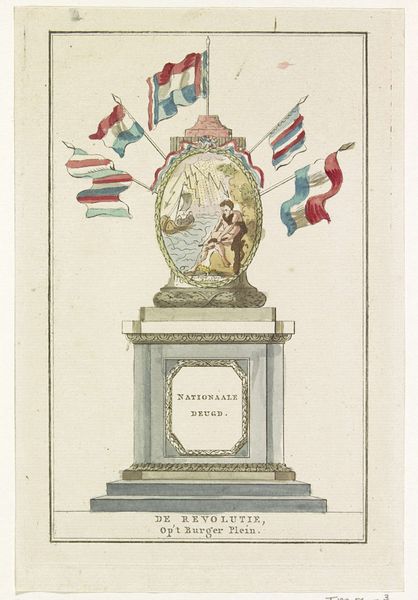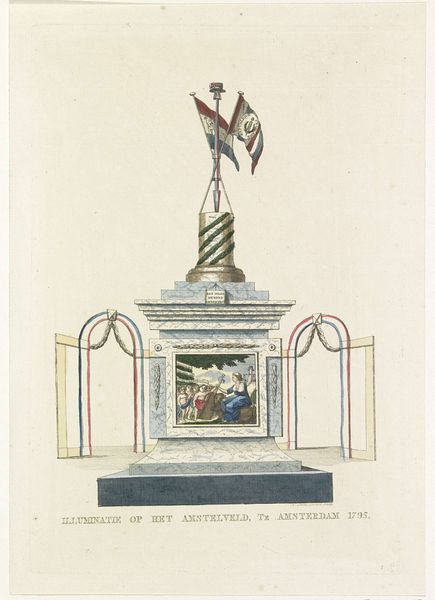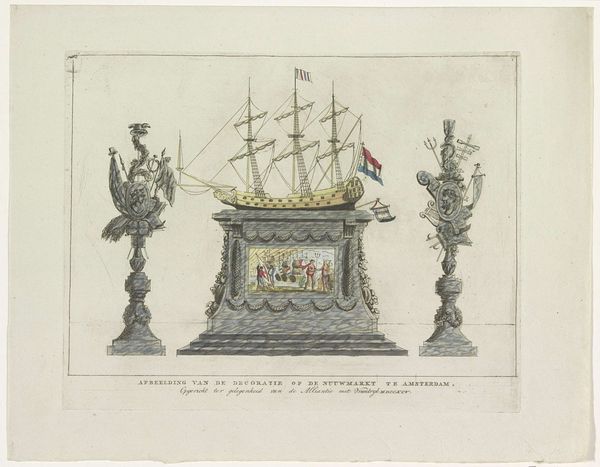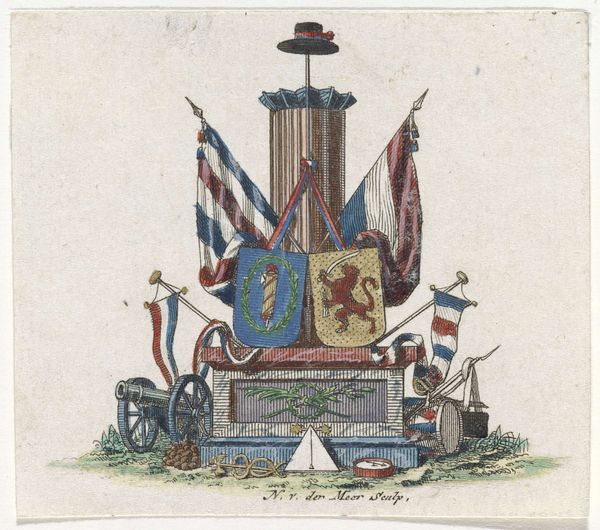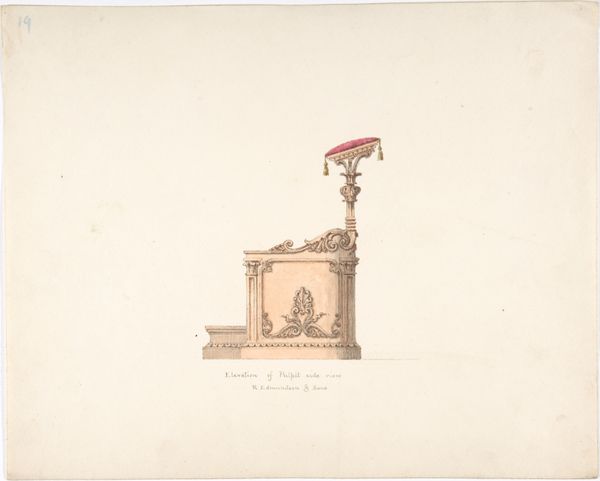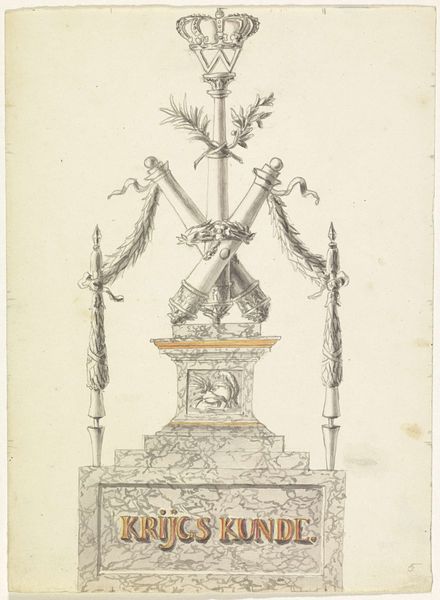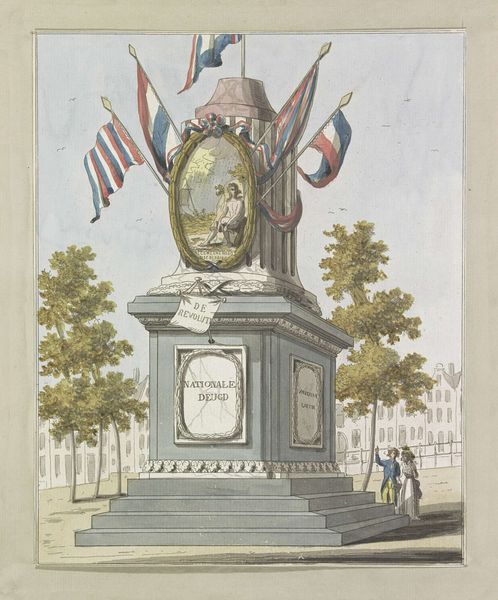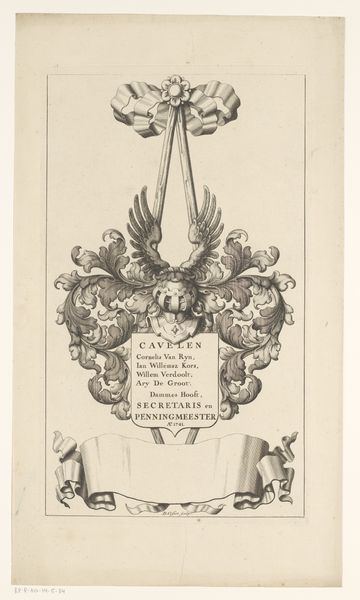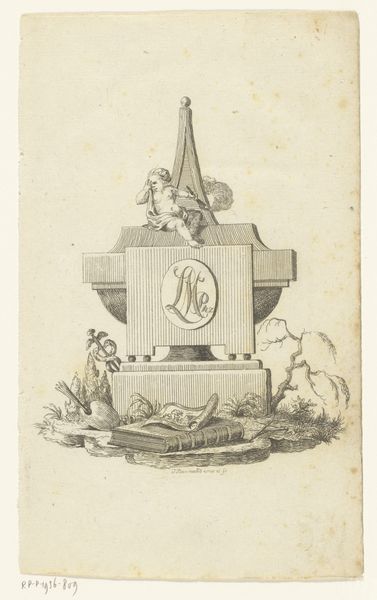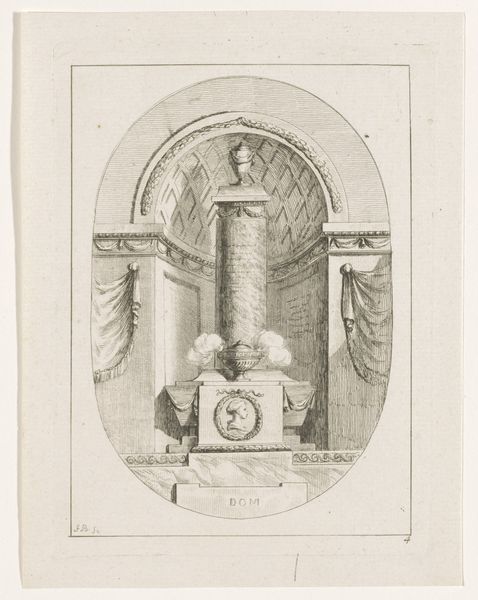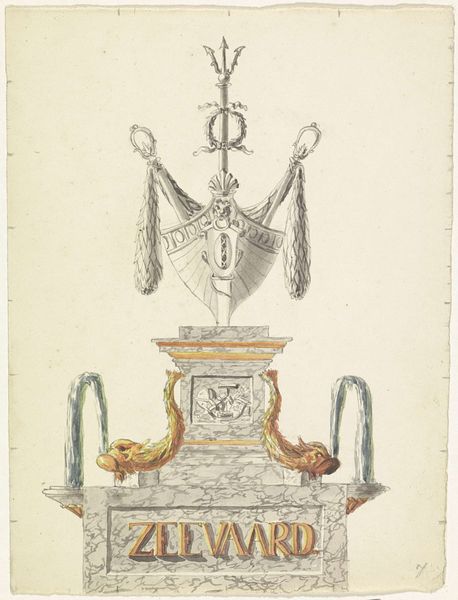
drawing, print, etching, engraving
#
drawing
#
neoclacissism
# print
#
etching
#
cityscape
#
history-painting
#
engraving
#
watercolor
Dimensions: height 513 mm, width 385 mm
Copyright: Rijks Museum: Open Domain
This drawing shows a temporary monument erected in the Koningsplein in Amsterdam in 1795. It was made by an anonymous artist, and it commemorates the Batavian Revolution. The monument is topped with Dutch flags and an oval medallion depicting a seated man, possibly a symbol of the Dutch people, gazing towards a radiant light. The inscription "Nationale Deugd," or "National Virtue," adorns the base. The image reflects the revolutionary fervor sweeping through the Netherlands at the time, influenced by the French Revolution. The old order was being challenged, and new ideals of national unity and civic virtue were celebrated through public displays like this. To fully understand this artwork, we need to delve into the history of the Batavian Republic, exploring its political and social transformations. Contemporary pamphlets, newspapers, and government records can shed light on the monument's intended meaning and its reception by the public. By examining these sources, we can better understand the role of art in shaping national identity during times of revolution.
Comments
No comments
Be the first to comment and join the conversation on the ultimate creative platform.
